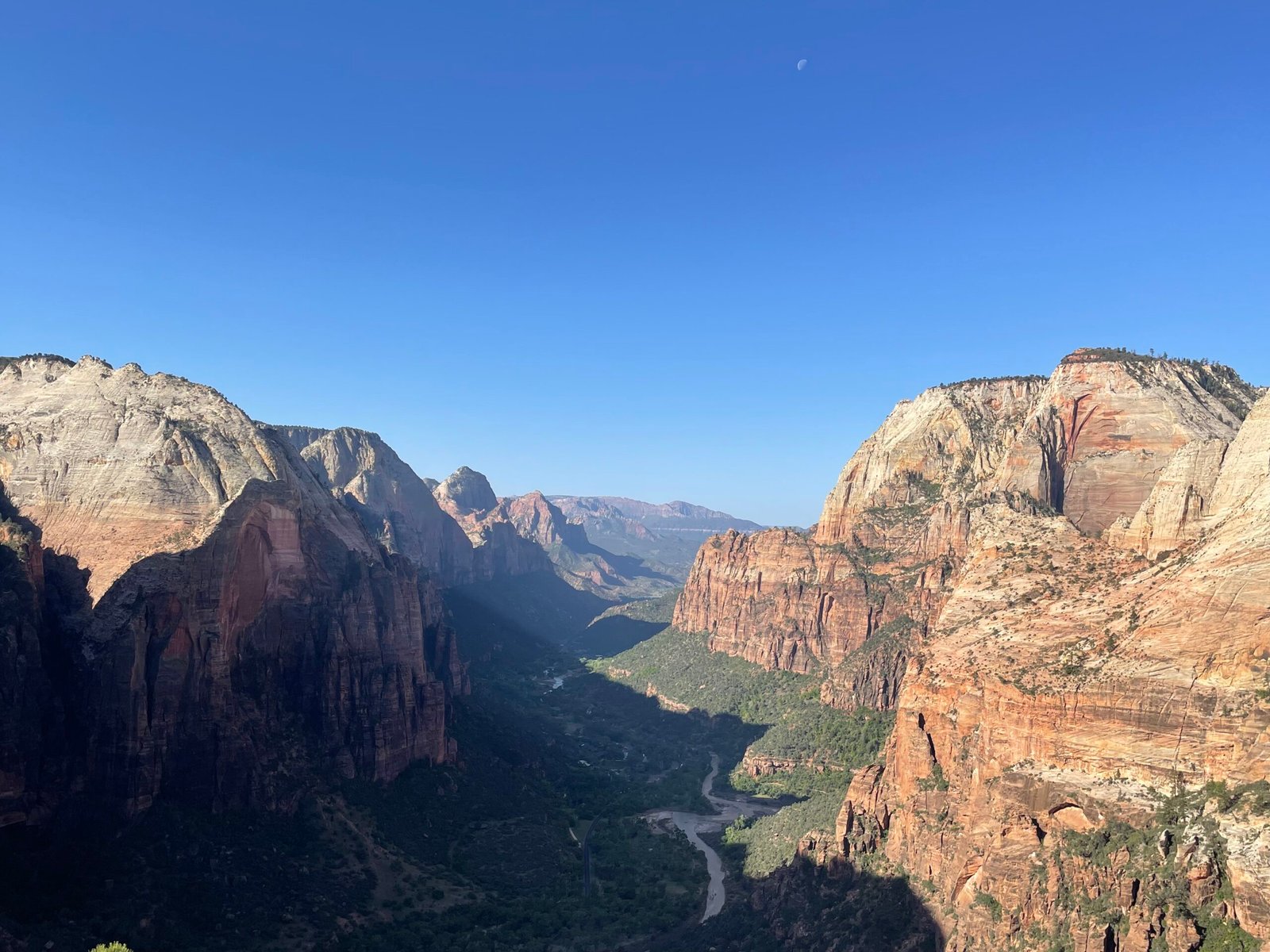
Hebrew for “Holy Place” (and you thought this wasn’t an educational site!), Zion National Park was controversially renamed by the Mormons from its original, native name: Mukuntuweap. It is hard to disagree with their assessment.
What is it?
A red Yosemite (or is Yosemite a green-and-granite Zion?!)
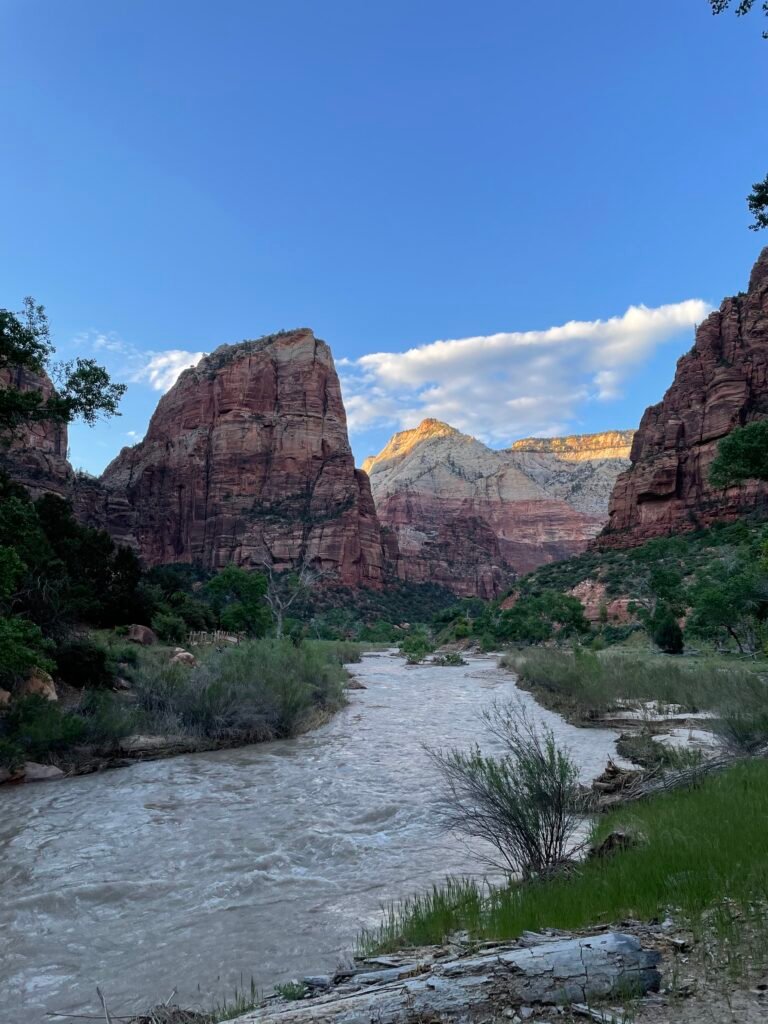
Fast Facts:
Location: Southwest Utah
Founded: 1919 (prior, Mukuntuweap National Monument since 1909)
Size: 229.06 square miles
Cost: $35/car, $70/annual pass (if it’s in your budget, just buy the $80 America the Beautiful pass – access to every national park without additional fees for a full year). As with all parks, veterans and permanently disabled citizens receive free access.
Visited: 2023
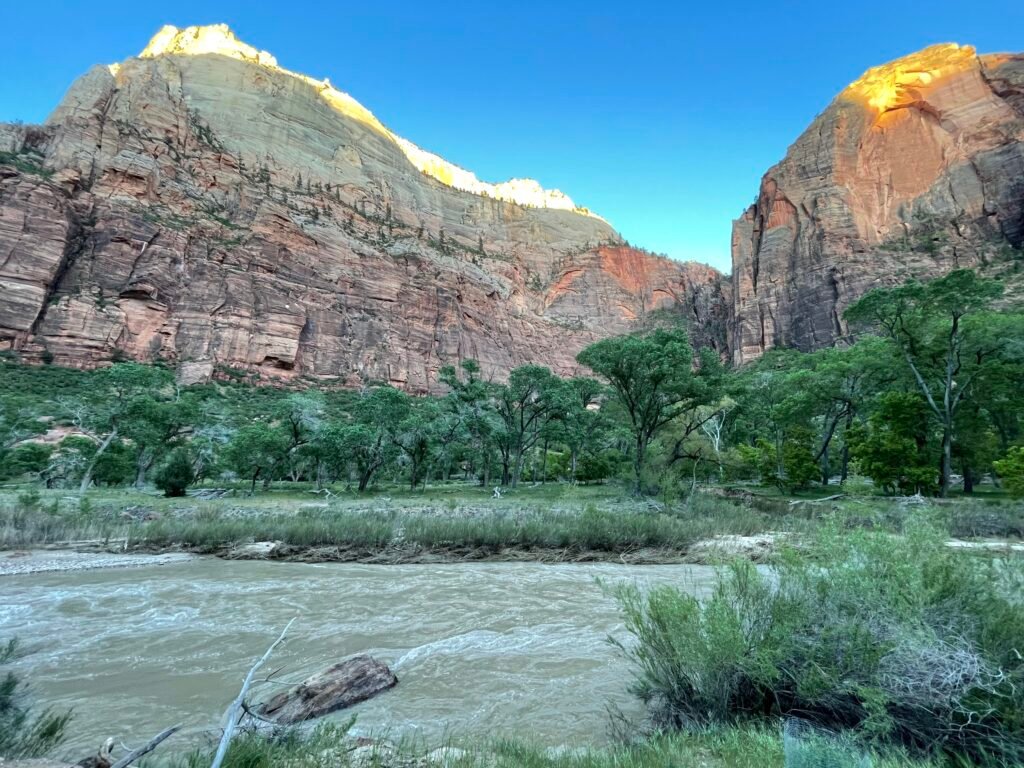
The Ridley Review:
Zion gets crowded. Like Yosemite and Yellowstone, it’s got the elite reputation that sends masses flocking to it every year. It gets so much traffic that, during most of the year, you can’t even drive into the main Zion Canyon: there is a shuttle that takes guests from the visitor center into the canyon and back. With that, it is hard to get some space to enjoy the incredible surroundings with all the crowds around you. Heck, the first of the two days I spent there in 2023, it took me 20 minutes just to find a parking space at the visitor center. It was a poor financial decision that led to an incredible moment of peace that is my lasting memory of Zion.
The short version of a long story is that I did not research the camping situation and wanted to spend a night in the park. I booked one night in the Lodge as a treat (peep the Hotels section below for the price). The benefit of spending the night in the park became apparent around 6:30 PM. The shuttle ceases to run at either 7/8 depending on the season, and thus the crowds exit en masse around dinner time to avoid getting stuck in the canyon without a ride and also to grab some chow at the many places just outside the gates. After eating dinner that night, I set out for an evening stroll around Zion Canyon without an end goal.
It was then the true magic of Zion revealed itself: once the crowds were gone, you start to notice the small things: the buzzing and humming of animals, the incredible flowers, the roar of the Virgin River. In almost complete solitude I strolled around for the better part of 90 minutes until sundown, reveling in how spiritual the place is. For 90 minutes, it felt like I had a national park all to myself; I guess this is what visitors to Kobuk Valley National Park must feel! I wish everyone could experience something like that; I’d say it was my favorite chunk of time I have spent in nature.
The Layout
Resembling a vertical rectangle that grew a horn, Zion sits in Southeastern Utah a couple hours’ drive from Las Vegas. The park’s main section is in the southern part: Zion Canyon itself and some solid scenery east of it, the Eastern Temple. This is by far the most crowded section of the park and where most guests spend their whole trip. Zion Canyon lives up to the hype, so this is no major surprise. The visitor center is located at the South Entrance to the park on Highway 9, and from you pick up the shuttle that takes you into the canyon itself. Unless you are camping or staying in the Lodge, you cannot drive on the Zion Canyon Scenic Drive in peak season, which usually is everything but January and February. Biking is, however, allowed.
Two other roads provide access to sections of the northwestern part of the park: the Lower Kolob Plateau and the underrated Kolob Canyons region. You must exit the park and make your way to separate entrances to enter these sections; see the “roads” section below for more details.
Transportation
Zion is one of the most aggressive parks when it comes to fighting overcrowding, making the shuttle non-optional on the Scenic Drive for most of the year. I think this is a good thing – it cuts down on pollution and the parking nightmares that can happen at other popular parks (looking at you, Yosemite Valley!). Simply park at the visitor center or the town of Springdale right outside the park; while the parking costs a fee in Springdale, there is a separate shuttle that takes visitors to the visitor center from town. The main shuttle picks up people at the visitor center and stops at 9 points of interest throughout Zion Canyon before looping back to the visitor center. No park transportation to the Kolob area exists; you need a vehicle for that. You can also drive the Zion-Mount Carmel Highway east of Zion Canyon.
Biking is accepted and common on all park roads.
Activities
Canyoneering makes an appearance! Very sad I didn’t get to knock out some of The Narrows when I visited – the water levels were too dangerous. I have it on good authority from a friend that it’s an incredible journey. Hiking, rock climbing, biking, and backpacking round out the common activities.
Roads and Gas
Highway 9 is the main way into the park: it comes from Bryce Canyon out east and enters the park at the East Entrance, providing access to the Zion-Mount Carmel Highway. A tunnel along the road provides a memorable first glimpse of Zion Canyon. The road takes you to the visitor center and the town of Springdale. The road continues west; guests can come from the west and enter through Springdale.
To enter the other sections of the park, continue west through Springdale. The first intersection with a paved road outside the park is Kolob Terrace Road, around 10 miles away from Springdale. Following the road will eventually take you to Lower Kolob Plateau inside the park, and the park exits the park again going north ending at the Kolob Reservoir just outside the park.
The second paved intersection with 9 is Route 17; head North on this road until you reach I15. Follow I15 until you reach Exit 40 about 20 miles in, leading you to Kolob Canyons Road. This takes you into the Kolob Canyons area of the park. I15 continues to run north all the way to Salt Lake City, providing access to the park from the northern part of Utah.
Gas is readily available in Springdale and other towns west of the park. East of the park is pretty desolate for a good couple of miles.
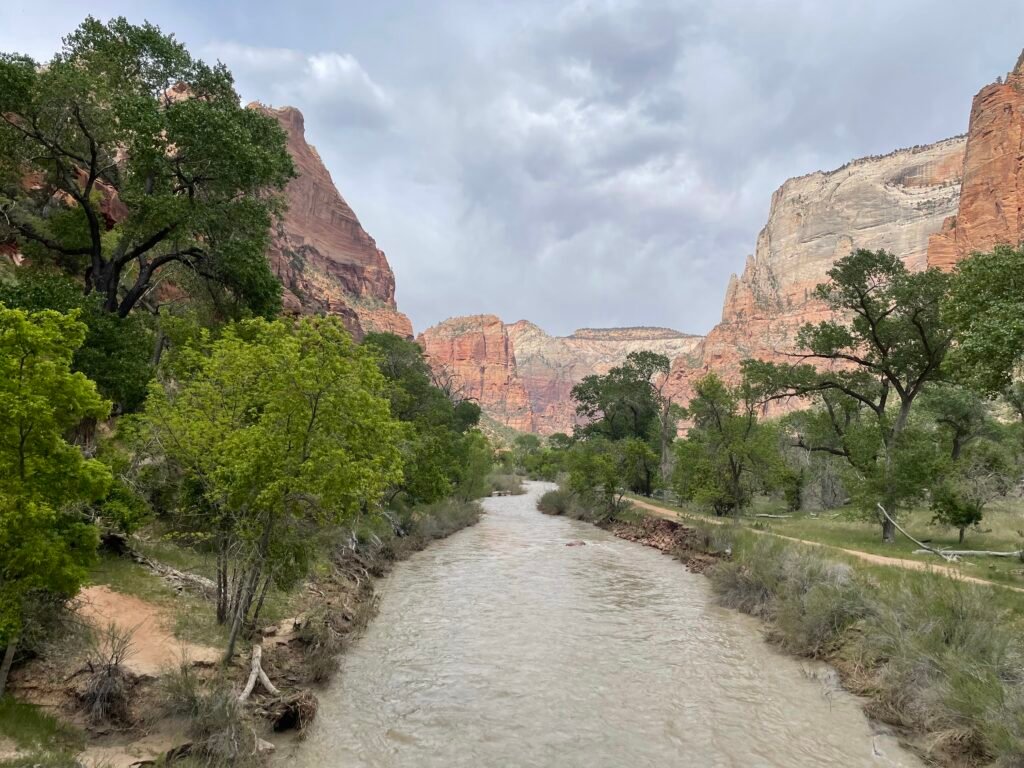
Rating:
Top 10 – a must see. Worth at least a day’s journey from Vegas but ideally several days to explore the nooks and crannies of this amazing bit of natural splendor.
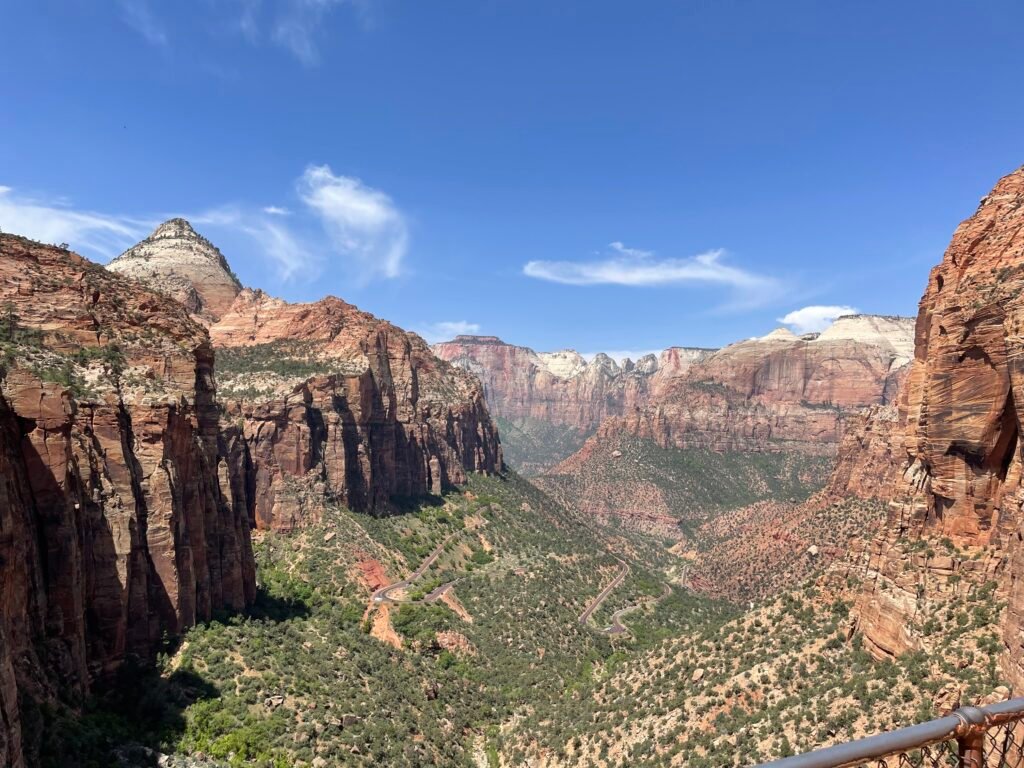
Food & Lodging
Food
Besides some basic provisions at the Visitor Center, there are 2 options inside the park:
The Castle Dome Cafe provides grab-and-go breakfast and lunch sandwiches, snacks, and drinks. Seasonally, a beer stand operates outside on the patio. This is located next to the lodge, while inside it we find the Red Rock Grill. You will spend some time waiting in line, even with a reservation, as orders are taken at check-in, not from a waiter. The prices are very high, as is common with dining inside national parks, and the food is average.
Restaurants in Springdale are plentiful and will meet any craving. Special shoutout goes to Oscar’s Cafe for their incredible portion sizes for a reasonable price.
Lodging
Hotels
The Zion Lodge is the only hotel inside the park. Reserve well in advance if you can, although bookings do open up frequently in the week before via cancellations. The rooms are quite nice, at a cost of around $250/night.
Loads of options in Springdale, but mostly in the 100-200 per night range even at the “budget” places due to location.
Camping
3 standards campgrounds; backcountry permits needed for overnight backpacking.
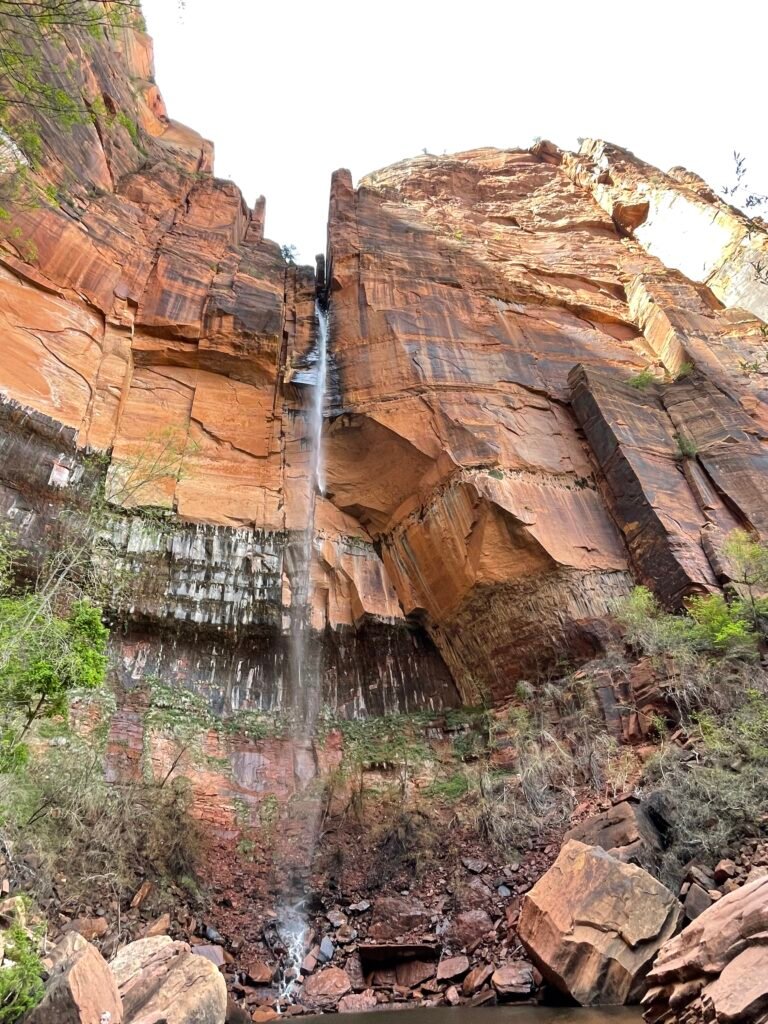
Hikes and attractions:
Hikes
Angels Landing – Peep this post to read about what it was like to hike this baby. One of the name-brand national park hikes, this takes you from The Grotto shuttle stop area to the end of a massive rock ledge, with 1000-foot high walls just feet from either side of you. NOT one to do if you aren’t in decent physical shape, scared of heights, or suffer from vertigo. While you don’t have to be in marathon-shape to do this, the hike requires stamina, some strength (both upper and lower body), and grit. The crowds on The Chains make this hike scarier than it actually is; finding spots to wait for people coming down the other direction is key. The infamous chains section is tougher coming down then going up; going up at least you can stare at the rock; coming down on the slippery, sandy rock, hikers are forced to look out at the stunning and scary drop-offs on both sides. The view at the top? Stunning and totally worth it. If The Chains don’t tickle your tastebuds, continuing up the West Rim Trail leads to less scary and equally stunning overlooks of Zion Canyon. A bucket list hike, but know what you are getting into – the Walter’s Wiggles section is an a** kicker, and that’s before you even hit The Chains!
Court of the Patriarchs – more walking path than trail; easily accessible from the Shuttle stop right next to the trailhead. Takes all of 5 minutes to walk the court of interesting plants and trees and get to the decent lookout point. Worth doing on your way into the bigger, grander parts of the Canyon to whet the appetite, but otherwise totally skippable.
Riverside Walk – the launching point of a trek into The Narrows, from the furthest Shuttle stop, Temple of Sinawava. A short, paved path that winds along the Virgin River and takes guests past a seasonal waterfall. Pretty without being overwhelming or having a standout spot. Easily accessible for guests of all fitness levels. A good hike to pick if you want the scenery without having to break a heavy sweat.
Weeping Rock – short, paved accessible trail with a little elevation gain, this takes visitors to a neat little spot where water trickles down a massive rock face, hence the name. Easily reached from the Shuttle stop of the same name. Another cool hike to do if you have multiple days; it is neat to see but not necessary.
Lower Emerald Pools – accessed from The Grotto stop along the Shuttle route, this hike takes you to the lowest of a series of 3 pools, occurring further and further up the Canyon wall. The least spectacular of the 3, it is a hike that will have you breaking a sweat. Guests of moderate fitness levels will still be able to do this hike; if you have the time and fitness to do so, continue on to the Middle and Upper Pools since you already made it this far.
Middle Emerald Pools – starts out at the same point and eventually splits and parallels the Lower Pools trail, but goes even higher to the Middle Pools. Similar views to the Lower Pools; it is at the Upper Pools that this hike earns its bacon. Requires similar fitness levels to the Lower Pools trail.
Upper Emerald Pools – the highest and most spectacular part of the Emerald Pools experience, this pool involves a gorgeous waterfall trickling into the pool. It does get crowded up here, for good reason: this is a really cool grotto amidst the high red walls surrounding you. As it goes highest, this is the toughest of the 3 Emerald Pools hikes, but still accessible for all, with some sweat and burning calves, possessing medium levels of cardio. Starts at the The Grotto as well.
Canyon Overlook Trail – moderate for its steepness and difficulty and not its length, the trailhead is on the Zion-Mount Carmel Highway east of Zion Canyon. This takes you up (and up and up) to a spectacular (fenced-in) overlook of the Eastern part of the Canyon. A great way to wet the beak if entering the park from the East; parking is difficult in this part of the park, so I recommend skipping if coming from the west.
Other Well-Regarded Hikes (That I haven’t Done)
Zion Canyon
The Narrows – the other half (along with Angel’s Landing) of the legendary Zion hikes, this takes adventurous souls deep into the wet wilds of the Virgin River and the ever-tightening Zion Canyon. From the the end of the Riverside Walk trail, you can proceed, weather/water level dependent, up to 4.7 miles upstream. There is no way to avoid getting wet – be prepared. The going will be slow. Checking with the rangers for weather/water conditions is a MUST; flash flooding occurs in the Canyon and has claimed lives before. You return the same way you came in.
West Rim Trail beyond Scout Lookout – the less death-defying hike up the West Rim, this gives you a view of Zion Canyon from ABOVE Angel’s Landing! The lookout spots are just a short ways up the trail from Scout’s Lookout/The Chains offshoot to Angels Landing, making this a similar length hike by distance as well. Many argue the view is better here; the crowds will certainly be less.
Kolob Canyons
La Verkin Creek Trail – crowds in Zion Canyon making you claustrophobic? Not getting enough time just soaking in the natural beauty? Zion has the hike for you! Located up in the Kolob Canyons region, this whopping 14 mile, out-and-back trail, takes you deep into one of the more remote regions of the park. Crowds are non-existent the further out you get! Pack food and lots of water – shade is hard to come by.
Attractions
The second stop on the Shuttle tour, the Zion Human History Museum is a small, neat, and air-conditioned museum looking at the history of humans in the region (Native, Mormon, and the Park Service mainly) and their impact on the natural wildlife and vegetation. Cool if you are into that kind of stuff or need a break from the heat, totally skippable if that doesn’t sound appealing.
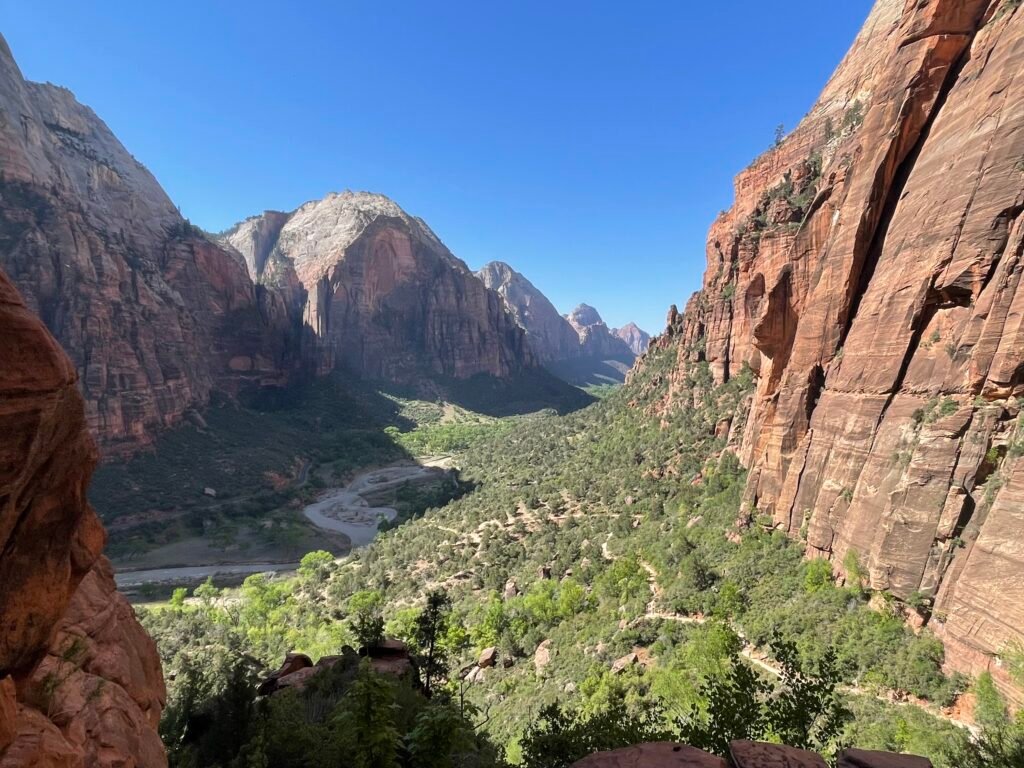
National Park Rankings
- Yosemite National Park
- Olympic National Park
- Mount Rainier National Park
- Kings Canyon National Park
- Zion National Park
- Bryce Canyon National Park
- Arches National Park
- Canyonlands National Park
- Crater Lake National Park
- Indiana Dunes National Park
- Shenandoah National Park
- Capitol Reef National Park
- Acadia National Park
- Redwood National Park
- Pinnacles National Park
- Cuyahoga Valley National Park
- Gateway Arch National Park
A note: as with all reviews to come, this will be updated upon any re-visit to the park. Feel free to comment or send in your own reviews or recommendations and we will get it added here!

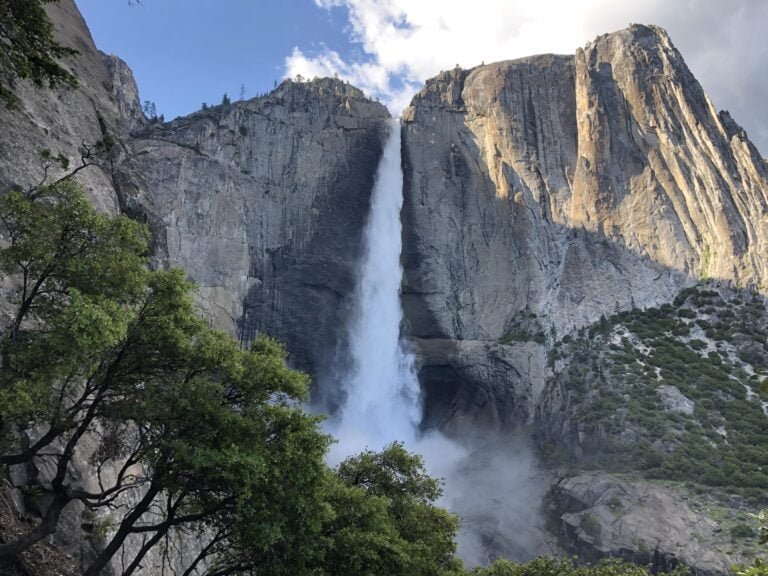
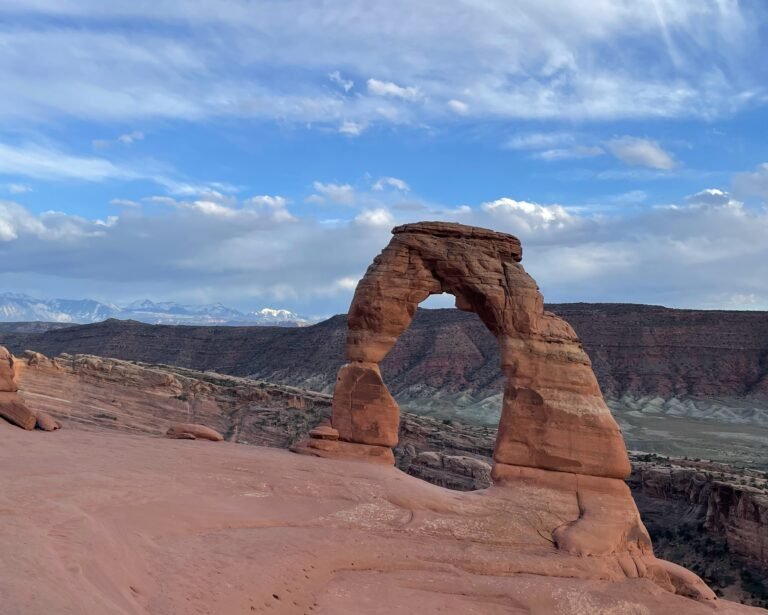
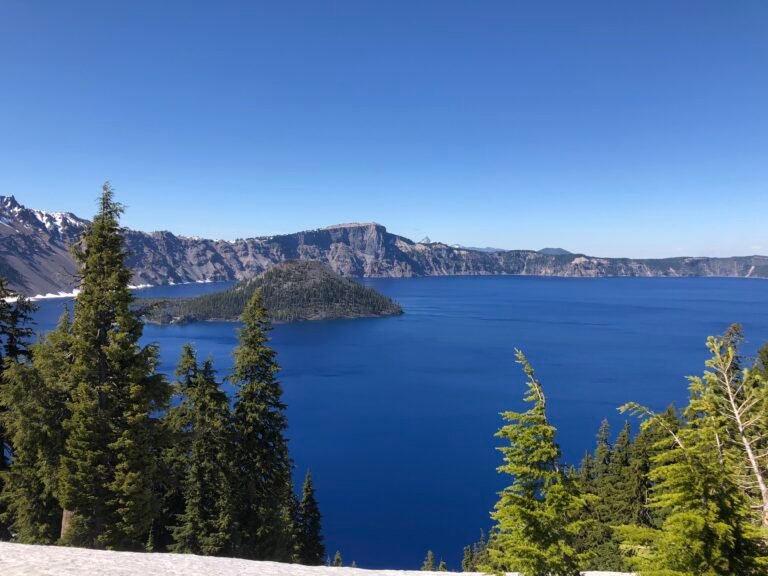

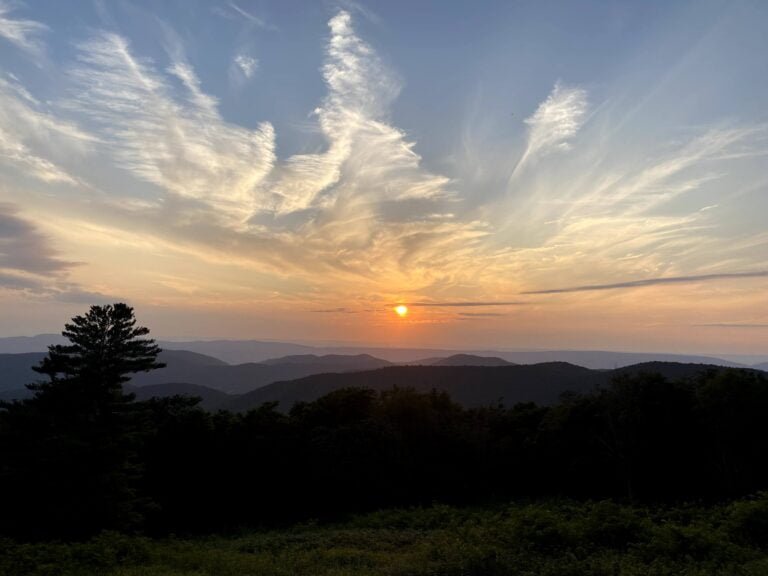
It’s super cool that there’s quiet and less traveled hikes in this park. I’m so glad you got the opportunity to be there at night and soak in the nature. It must’ve been incredible!